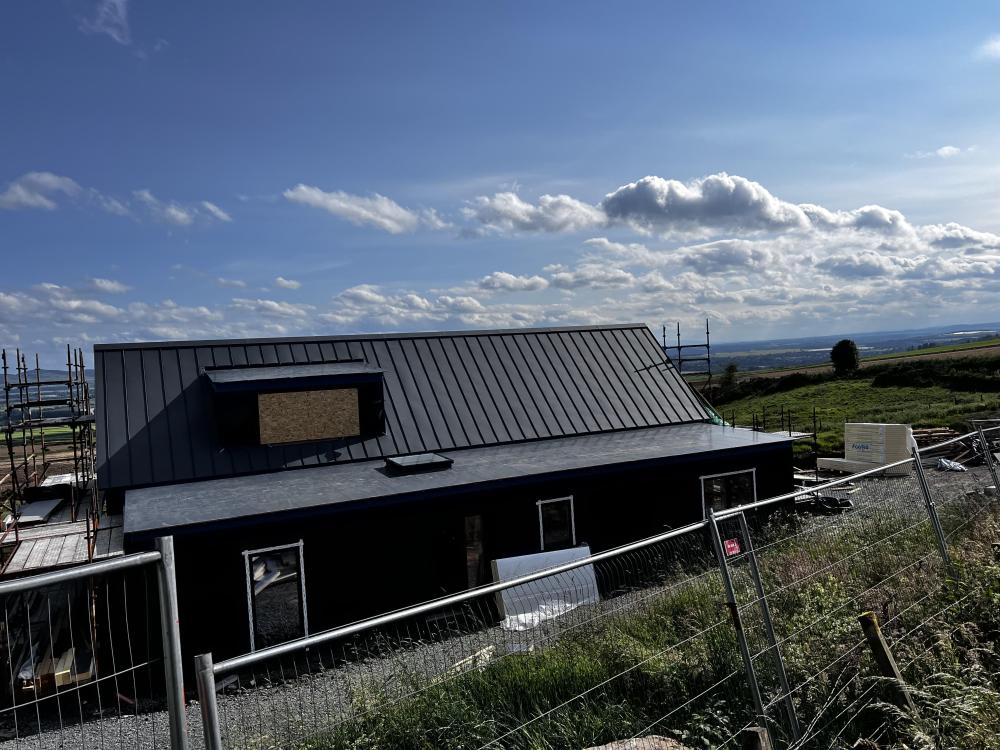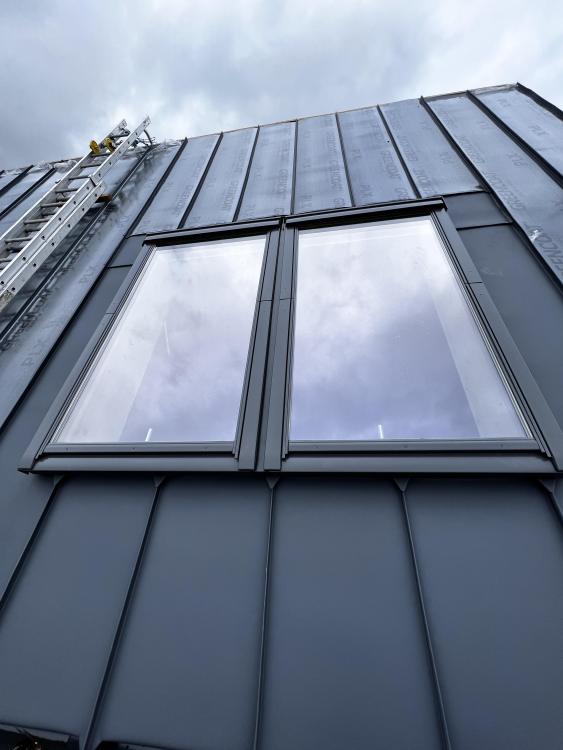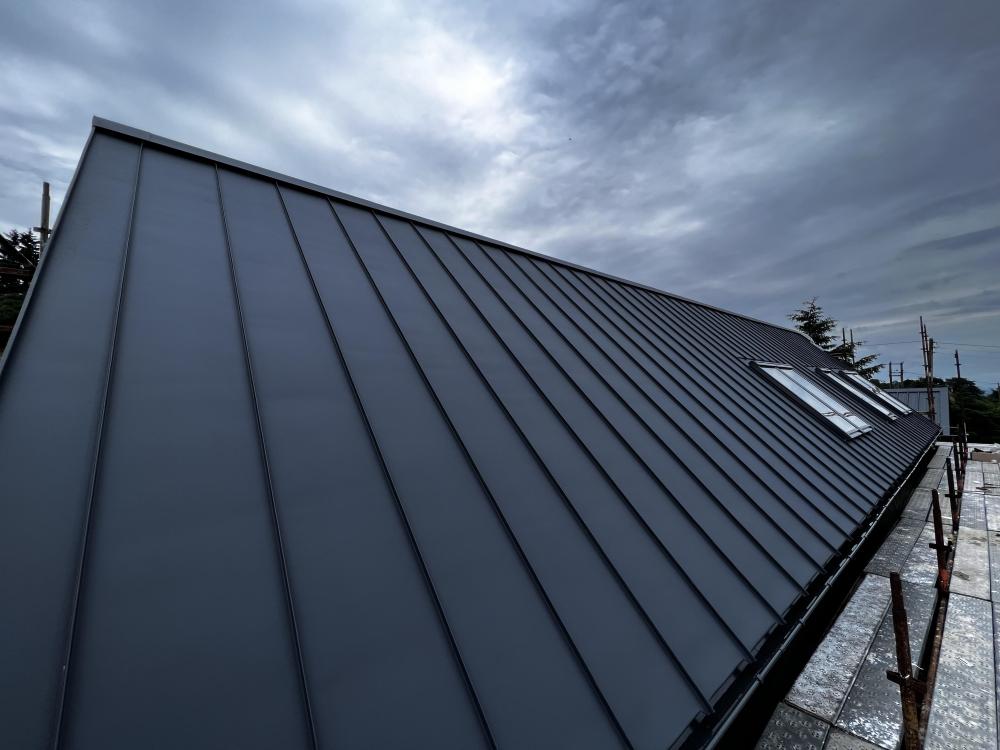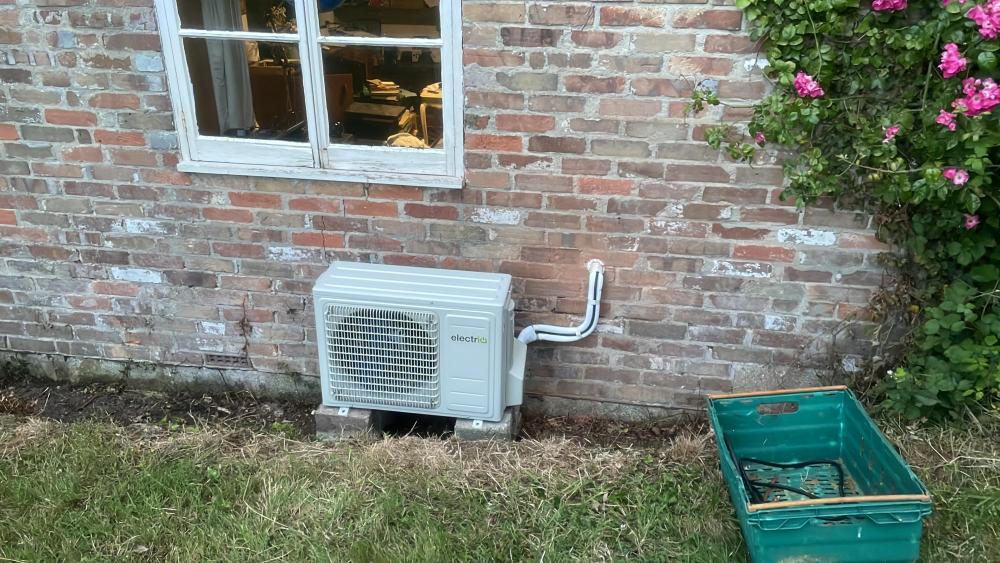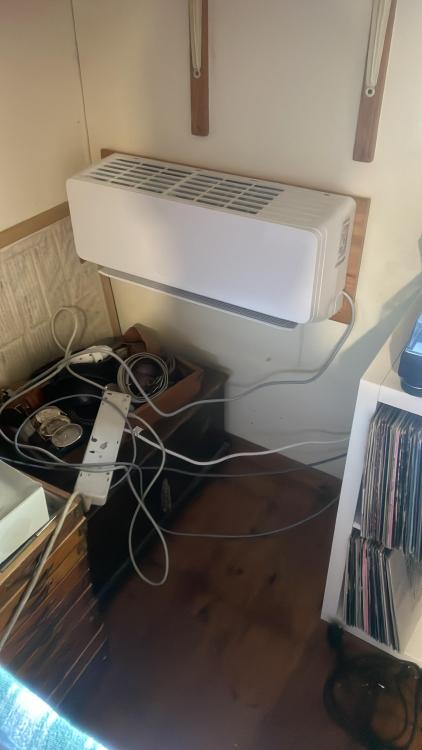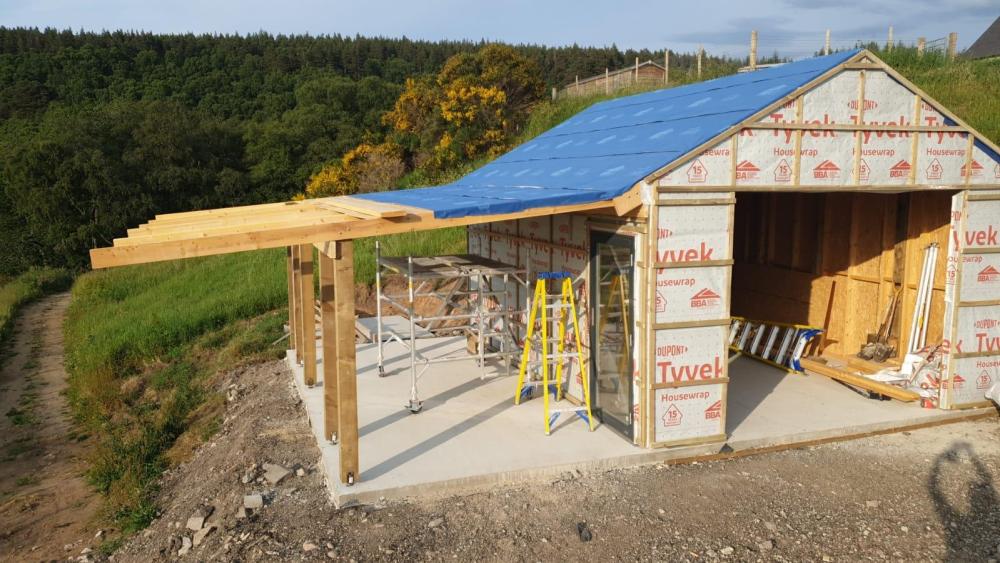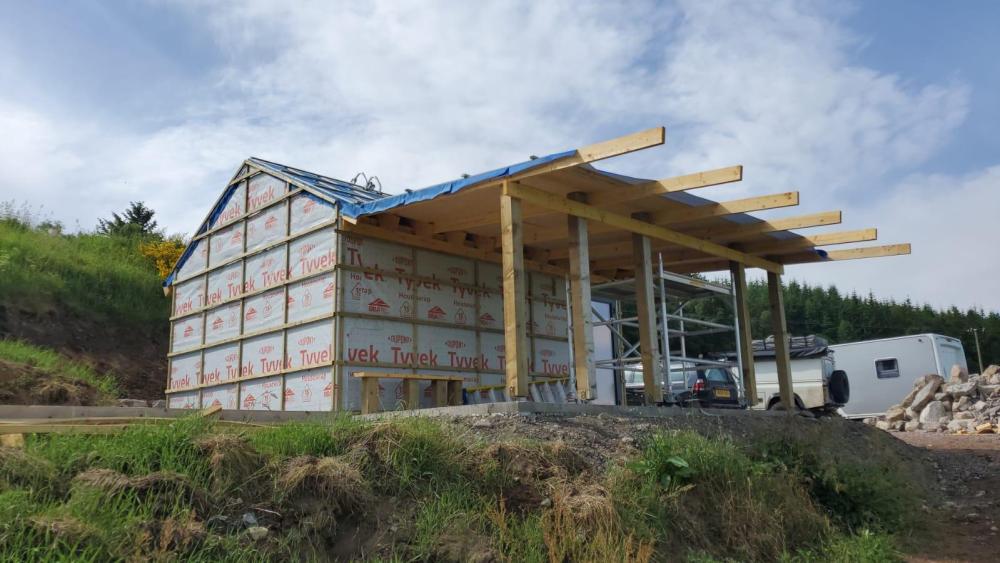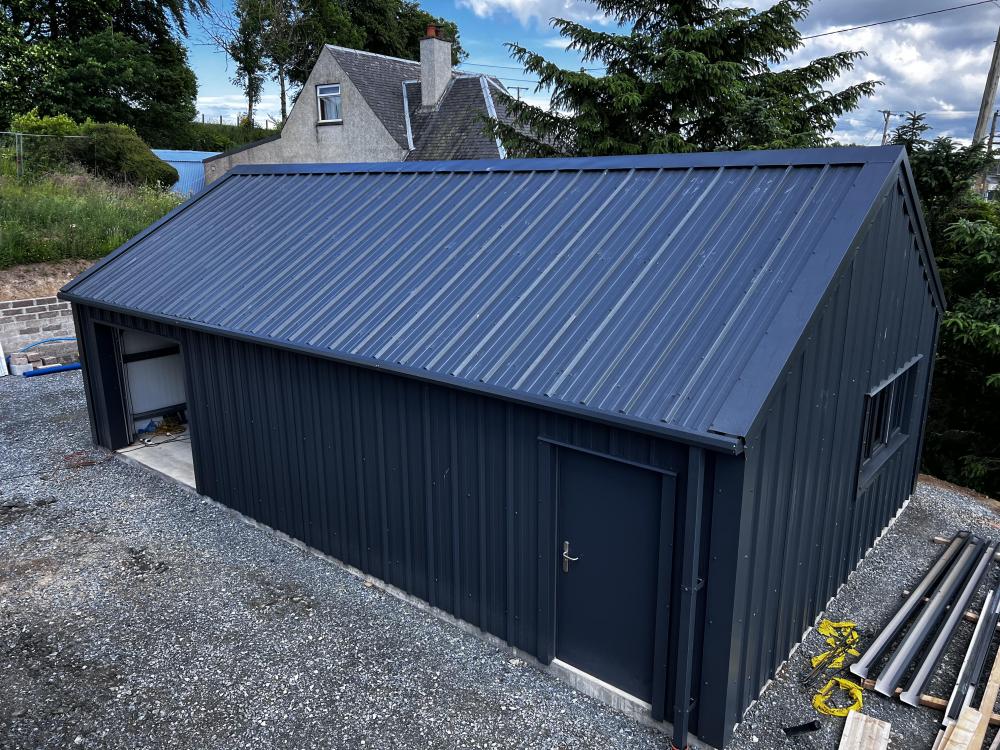Leaderboard
Popular Content
Showing content with the highest reputation on 06/21/23 in all areas
-
I did have a small win yesterday. After seeing the roof finished I decided I didn’t want to take the SVP up through it. Fortunately I had thought about this before I built the garage so when we were doing the groundwork I had a popup fitted in the garage slab connected to our sewer. I spoke with BC yesterday and they said it’s fine for me to take the SVP up through the garage roof. Therefore the roof will be completely clean, and no airtightness ruining holes and leaks to worry about. I could even take the pipe up the back of the garage hiding it from sight.3 points
-
A long book. But summary would be short. “The World is full of incompetent negligent muppets. Your job as a self-builder is to DiY then you own all the mistakes and/or avoid the muppets”.2 points
-
Inflation stays at 8.7%. Baring cars, all things people typically wouldn't be buying in a recession. The crux of it is, not enough people are yet feeling the pinch.2 points
-
2 points
-
I just finished installing this last night, at my off-grid place in Dorset. This is to provide shoulder season heating (and possibly all winter heating) in a room that currently has a burnt-out woodburner as the only source of heat. We don't have any central heating at this property. The woodburner will be in the metal skip soon. Easy install, and so far seems to heat and cool well. 700w when in heating mode.1 point
-
Here is the progress on the garage, now adding the lean-to. 2 weeks of long days x 3 diy ers. The materials cost above slab is about £5k incl the cladding yet to come The ped door was surplus due to an ordering error with the house. I think a kit would have cost a fair bit more, but be less sturdy. Your next question is about bco isn't it? BUT the garage is under 30m2 and he says the lean-to doesn't need regs. I don't understand that but it's what we wanted to hear.1 point
-
Ask Unilin (was Xtratherm) to do an interstitial condensation risk analysis for you. They can do it over the phone and email you the results within 30 minutes.1 point
-
Putting them on the bulkhead above the bathroom door is popular, depending on door heights that's either right in view or well out of it 😅 Regarding UFH electric mats I had each wired in 2.5mm2 direct to the Loxone cabinet, where I control them from a cheap zero crossing SSR driven by a dmx decoder. Originally I had the Schluter OEM controller (their most basic manual one) installed in the isolator switch locations, with the underfloor thermistors handled there, but these have a very annoying click every time the power up. So I removed them completely and manage it all in Loxone: I extended the thermistor wires back to the Loxone cabinet (had put spare CAT6A in there just in case this was needed). It was fairly easy to determine the temperature curve for the thermistor and hook the up to analogue inputs on the miniserver. So I now have a software PID controller block that manages getting the floor up to target temperature. Using SSR rather than mechanical relay is crucial for this, as it modulates the mat on/off every second or so which would be hell done mechanically. The isolator locations are supposed to be "obvious" for someone working on the equipment. I'd hesitate to put them in the loft, my Loxone cabinet itself is on the same floor so much more obvious place to go than hunt around one floor up for it.1 point
-
1 point
-
“ Happiness units “ is now an official term . My happiness units in wine and steak are beyond measurement!1 point
-
Yes that is a big gap. It may close again over the winter but that doesn't mean there isn't a problem. The building is not about to fall down though. Please let us know how you get on. I imagine they have a well practiced, standard process of getting you to go away.1 point
-
On a brand new house, yes i'd be concerned. Thats a fair sized gap. Get in touch with them ASAP and get the ball rolling...1 point
-
What flow temp are you currently using? that will get you close determination of expected running cost. But you are chucking huge amounts of heat at the conservatory. Sounds like a small area to heat, why on earth would a gas boiler heating that area cost so much? £25 a day at 11p per kWh is 230kWh or about 10kW average heat input. 36m2 area so about 230W/m2 Which if correct is insanely high. It a wonder you can walk on the floor. So something in the original post is not right. So we need more information. What are the pipe centres in the floor. What is the flow temp Do you know the floor buildup What glazing do you have, single, double..?1 point
-
Jim, unless I’ve misunderstood you’re paying £750 per month in gas only, to heat a ground floor of a house only? If that’s correct, even with high energy prices you will probably have a very poorly insulated house whereby an ASHP won’t solve your problems. I would suggest you take advice from Energy Savings Trust or equivalent agencies. Conor is right, you are better spending money on things that will improve insulation.1 point
-
1 point
-
ASHP won't be any cheaper with the current electric prices. It's greener, not cheaper. I'd spend the £10k+ on other building fabric upgrades.1 point
-
foam, membrane and tape are your friends! looks like you've got room to put some insulation between the wall and frame too.1 point
-
plus 1 I’ve highlighted before It would be a real help if locations where included in everyone’s info Probably worth posting your location Mid August sounds to long1 point
-
1 point
-
Nothing happens until you pay. Try one of the others or directly with a manufacturer.1 point
-
1 point
-
What problems are there with kitchens, other than missing parts? I did once have a worktop veneer with bumps in it but they simply replaced that. Electrical items would be another matter. If in doubt about your rights, speak to the manager.1 point
-
1 point
-
The same one that's bent us over for the last x number of decades, yes, that one. We will graciously accept any injection of funds to the local infrastructure. But please don't be any more of a prick. What, like a magician does when the rabbit disappears?1 point
-
Bingo Bango Don't be tempted to buy cheap, you need reliability and longevity !!!1 point
-
Only have a plant room upstairs, so all bedrooms are on ground floor. But wife wanted thick wool carpets in bedrooms, so UFH in bedrooms is pretty limited. Have been debating a fan coil in the hall and lounge, but that will have to wait until next year.1 point
-
I'm trying to maxmise happiness and the extra cost, in terms of actual pounds, means nothing to me quite honestly. I wanted to maximise generation on the specific roof and there is nothing irrational about this. However, I'm fairly sure that I could find a set of assumptions that would make the install close to optimal (as an actuary I can usually find assumtions to say what I want, but I won't go there). In terms of the panels, the marginal cost wasn't that great. It's just one flat roof with four rows of three and it looks great. If I'm getting anything half sensible for importing then it may be close to optimal anyway. Like I say though, I like getting what I can from the roof. Heck, don't we all spend time faffing about with calcs when the value barely justifies it? It's fun, right? The battery is a different thing I guess, and initially I didn't think that a large battery made any financial sense but the main thing putting me off was the size. When I saw how small the ones I have are then I got the larger option, and it wasn't as expensive as I thought. I didn't actually have as much choice in terms of parts as I'd like, without a wait, as parts were so scare last summer. I approached over 20 firms, put my details on sites like Bark, and hardly got anything back. They even used a larger hybrid inverter (for no extra cost) as they couldn't source the smaller one they costed for. As it happens, the quote I went with was the lowest despite having a bigger battery. As it is, it's big enough to last a day so charging at night means it's of value in the winter. Yes any saving, if there is one, is lower per pound of instal cost than a smaller battery but I really don't care! Back to TVs - if I consider a 20 year period, for example, then what I spend on TVs/soundbars etc over the cheapest options (second hand, smaller etc) will add up to plenty. It's still great value to me though!1 point
-
That doesn’t look bad at all Tell him to go round and give the ties a rattle Then we are good He will know what you mean1 point
-
1 point
-
Who's doing the cleaning? You? Somone else? The simplest rule is - Don't think: clean. Just bloody do it.1 point
-
Thanks. I usually quote 13-15% losses so about where you summarised it. That's the reason I'm such a fan of hybrids tbh. I doubt I will ever specify another true AC coupled inverter as it just doesn't seem to make any sense whatsoever (to me, anyways!).1 point
-
It does depend on where the footings start / finish (depths) of course, but as any general builder will just regurgitate the same shart they used on the last 40 jobs, I'd take everything they say with a pinch or 3 of salt. Firstly, they should ONLY comment after conducting a survey, and that involves pulling some flooring up and getting a tape and possibly a shovel out. The depth would be made up with layers of insulation, so no need to import huge amounts of logistically difficult hardcore etc, just a base layer of type1, a sand blinding to get you snooker table flat and level, and then use cheaper EPS for bulk build up and finish with PIR (minimum 140mm). Set the top of that to be FFL -75-80mm for dry screed (relatively slow response from UFH), or -50mm for liquid screed (quicker response for 'timed on - off' of heating). Unless he has used a calculator to work out differing costs for different heating methodology, has asked you how long you'll be in the property for, has worked out heating requirements per annum, and then added the value to you as the owner re floorplans and benefits thereof, then how the feck would he know what is economical or not?! BCO will only be interested in the damp proof course, and the amount of insulation, but you should exceed what they ask for as UK building regs is dire on a good day. They'll 'maybe' be interested in you preserving airflow to the other ventilated floor spaces, so maybe it would help if you uploaded some floorplans showing these areas vs others etc.1 point
-
The figures I quoted here: Are from billed data from Octopus, i.e. it is the real life performance of the system. That allows you up to 16% losses whilst still being a "symmetrical" tariff - the seasonal shifting I referred to before. I had some comments about use case/costings here, I think I have a different view to many on what the battery should be doing on this tariff: Agree that AC batteries have even higher losses, so the maths would change for those.1 point
-
We seem to be noticing a reduction in trade (catering). Usually by now we are struggling and have to take on extra staff, not at that stage yet. Also noticed that in town 3 of the larger restaurants have closed down and a couple of the smaller ones have not opened up as usual. Not surprising really, I feel ripped off in restaurants as I know the prices they are paying, roughly what their overheads are, and can then calculate the amount of mark up they are putting on.1 point
-
Lindab have all that sort of stuff in stock. I'd leave 200mm dia holes and then foam in round. You want to leave a bit of a fall to the outside in case wind driven rain gets in.1 point
-
Thanks for the ideas. I'm sure there's many ways of doing this. In practice we tend to keep the kitchen and living room doors open most of the time, but the bedroom doors closed- unless we're using the stove and trying to spread the heat through the whole house. Bed 2 is a spare room so usually left unheated.1 point
-
Yes I do. On the news today they were saying how terrible it was that the average renter would be paying about 28% of their salary on rent. I raise you when I was paying 50% of my salary on my mortgage.1 point
-
It should be built up with steps to allow it to shed properly and make sure water doesn't creep back. Like this The felt should be ran down the valley and then the felt on the pitches should be lapped on top or into the valley. They have also used non-copper nails in it, plus lead valleys should never be nailed on the flat or further down than the top 3rd of it to allow for expansion.1 point
-
Ah! I'm about to move the A2A upstairs in Cambridge and chuck in an A2W for rads and DHW downstairs (plus rads upstairs because there; but mainly for downstairs) Will be a single head to upstairs landing though (open the doors during the day to cool); and would like to think I might get around to trying wet ceiling/wall heating downstairs (easier to retrofit as a plasterboard layer under a ceiling / onto a partition wall than it would be to wet UFH; and with higher output per m2 at a given flow temperature; albeit not as comfortable as UFH) Not too dissimilar in conclusion. 🙂1 point
-
I use UFH. Not as good as Aircon, but takes the edge of the temp and stops us melting completely, unlike last year every time the sun came out.1 point
-
Flux is pretty much a game changer . My import since joining is 0 ( though the algorithm goes to the grid if it deems fiscally better ) . Daily export is around £7 . Obviously once we approach winter the rates will undoubtedly change ; but ; it could still be potentially making money !1 point
-
Flux seasonal offset couldn't be working better here, I've just hit £0 net bills since joining in mid March - gas and electric including standing orders. I'm now building up a reserve to offset September usage. Average import price 21.73p Average export price 25.16p 8% of the PV/A2A ASHP investment repaid in those three months of Flux1 point
-
Travelodge is booming. Bookings up year on year. However about 30% of the bookings are paid for by the Local Authority, housing homeless families.1 point
-
Hiya. Good post. What you are doing is hard and taxes the mind. When doing a detail like this it's common to feel.. am I making an idiot of myself here and am I making a big mistake? Well done you for asking the question and posting your detail. Hat off to you as you have identified a big elephant in the room .. how do you marry up a warm roof at the eaves with the walls below, and how do you make / detail the transition between a beam and the rest of the wall. These details are very, very tricky. Every job is different and very hard to.. to get everything perfect. This is what we face as designers.. we balance what we really want with what is achievable to build on site and cost efficient. Next we try and construct an arguement that will satisfy the building regs... we are not cheating.. we are innovating, understanding and improving design. The regs don't tell you how to do this and you won't find much stuff on the internet. Here are my thoughts, I'll make some assumptions as I can't see all the detail.. what is below and what structural loads are involved.. cut me a bit of slack too? For all. Let us start with buildability. The rule of thumb is simple stupid works. This drives down cost and then as you drive down the cost you can then reintroduce the things that really matter, we offset heat losses/ bridging by improving else where. If you value engineer this you also get to consider the extra stuff you also want.. be able to spend more on the things you see visually.. like a better kitchen. Ok the top detail where you have the box gutter. If you think about the sequencing of the works.. make it simple. You do the structural roof and then add bits on once you have selected your roofer and taken advice. Try and build in some flexibility in case you have to change roofing contractors or go for a different membrane / system. Keep your options open as prices are changing. Can you plumb cut the rafters at the outside line of the flange of the UB. Most joiners are ok to do a checked (birds mouthed) rafter but you have quite a complex shape.. I'm not shitting you.. a lot of modern joiners just can't do this simple stuff... they work with battery powered tools that have no poke.. they will faint if you ask them to cut a check they way you have detailed cut along the grain.. cut by hand with a saw? Frankly a lot of them need a dose of National Service.. or something like that.. for those on BH that have other views.. Some of our European neighbours have national service.. I say this out of frustration with the building trade at times. Next scab on some 95 x 45 C16 timbers at 1200mm centres say to every third rafter. Now you have less repeating bridges, rather than every rafter they are only one in three. To the ends of the scabbed timbers attach a runner timber behind the fascia, make it straight and that gives you a continous piece of timber to fix the gutter brackets to.. a get out of jail free card when you come to fix the gutter and fascia... For me I would say.. put the main roof on first and the ply, run the VCL under the upstand edge kerb and decouple the job, extend the VCL as far as you can. Give the roofers a flat bit of ply with continuous VCl below and let them form the kerbs the way they want to. That also lets you change horses / insulation thickness if you want to change the kerb detail once you get the prices back. It's not just a buildability thing as follows. On the top detail I would introduce a strip soffit vent (although not technically required on a warm roof.. but we are innovating here and designing using first principles) just behind the fascia as I know that in real life there needs to be a compromise between the SE and Architectural Design. You have this dead zone where it is really hard in practice to marry up the warm roof with the wall below and still make things work structurally. I'm not surprised you can't find any details on the net.. BC themselves often have no clue either. But this is not their resonsibility, the basic regs are some 500 pages long, then you have on top of that loads more regs. BC are there to do their best..don't knock them without good reason.. delve into it and at the end of the day it is you responsibily to comply..with all the standards that the regs refer to. If you want to protect your asset just do it properly and don't try to be a smart arse, innovation.. yes go for it, use first principles, save money in places and spend on the things you enjoy. If you accept the weak spot between the wall and roof then condensation / the dew point will happen but how often you will hit the dew point where you have water in the structure.. the objective is to say how often and how do you remove that as quick as you can once the weather / temperature changes. The air tightness is hard to detail and complex... think about first what is the simplest way to do this that the builder will actually do / deliver at a sensible cost.. next think about.. if I ask for complex stuff how do I make sure it will get done and do I need to be there every day to check the builder has done what I want? How will that impact on your relationship with the builder? The alternative is that you pay someone like me to preform a Clerk of works function.. that is very expensive...and will have a knock on effect on the prices you get at tender stage. Keep it simple so everyone is in their comfort zone. My view is to say.. you can draw stuff to death with complex detail but it is never going to happen on site on a self build job where every penny is a prisoner. Go for simple stupid, you can enforce that easily on site without someone like me turning up. Let's just accept that some water vapour is going to get into the eaves and condense from time to time. What can we do to get that moisture out before it cuases harm to the timbers. My starting point is to often look at a soffit strip vent, extend rockwool out half way say over the soffit so you shift the dew point outwards, examine the location of the building, the prevailing wind, take view on that, make an Engineering decision, check it is buildable and say.. well I can rest easyish now. Ok, have a go at re detailng this with a solid bit of timber behind the facia and running the rockwool out half way over the soffit. Now you have shifted the dew point outwards. Put in strip vent to ventilate that. Have a go at thinking the construction sequence through. One last couple of things. Don't use OSB to form the box gutter, spend a bit more on doing it in a WBP ply.. you are asking for trouble here if you use OSB. Make sure you have a good support over the gutter area as this is where folk step when accessing the roof and point load the roof... like the window cleaner... think ahead.. in real life where is the roof going to get loaded / subject to trafic on a regular basis? Hope this gives you some food for thought, even if to say.. no Gus it's not for me. Design is often about identifying what you don't want and this lets you concentrate on the things you do want to achieve.1 point
-
Welcome. I've been in construction for 50 years, but learn a lot on here, and there are plenty of practical experts. Join in too where you can.1 point
-
welcome! this whole forum is full of useful threads and has a useful search function. as you've got time i recommend just slowly working your way through the relevant subforums to get a handle on things. Also i can recommend picking up a copy of Mark Brinkley's 'Housebuilder's Bible' as a great place to start to get a good understanding as to what is involved. good luck on your journey1 point
-
1 point
-
We used RIAS Scottish Conditions of Appointment of an Architect - Small Project Version ASP/2018 you'll find a copy online the English version will probably be the same. We went through the Schedule of Services and took a pick and mix approach to what was on on offer from the stages below. Although it was classed as a full service approach I would have said the architect took the lead for Stages 1 and 2 then it was over to the Architectural technician for the rest. There is a load of Additional Services that can be added to the below if required. We then agreed a fixed fee and off we went. This all really paid for itself when the builder went in breach of contract then tits up. Preparing the Design Work Stage 1.0 – Preparation of the Brief 1.1 Ascertain Client Requirements 1.2 Obtain Site information from Client 1.3 Advise Client of his/her duties under CDM regulations 1.4 Visit Site and carry out preliminary appraisal 1.5 Identify Project and Construction Budgets 1.6 Develop outline brief 1.7 Agree Preliminary timetable Work Stage 2.0 – Initial Design 2.1 Prepare initial design proposal 2.2 Provide indicative guidance on cost and timetable Work Stage 3.0 – To Planning Consent Application 3.1 Consult with Local Authorities and Utilities as required 3.2 Progress Stage 2.1 design 3.3 Prepare application for Planning Permission 3.4 Submit application for Planning permission 3.5 Advise on procurement methods 3.6 Report on timetable, agree revisions Work Stage 4.0 – To Building Warrant Application 4.1 Progress Stage 3.2 design 4.2 Co-ordinate work of other consultants 4.3 Report on timetable, agree revisions 4.4 Prepare Warrant Application 4.5 Submit Warrant Application Preparing the build Work Stage 5.0 – Construction Documentation 5.1 Advise on and agree form of Building Contract, including Contract Administrator 5.2 Prepare drawings, schedules and specifications sufficient for tender 5.3 Co-ordinate information from other consultants, specialist designers and contractors 5.4 Prepare Description of Work Work Stage 6.0 – Tender Administration 6.1 Compile list of Contractors, if applicable 6.2 Assemble tender documentation including Bills of Quantity or Schedules of Rates etc. prepared by others 6.3 Issue tenders to contractors for pricing 6.4 Take delivery of, and report on tenders 6.5 Advise on appointment of contractor 6.6 Agree frequency and scope of site inspections Progressing the build Work Stage 7.0 – Contract Administration 7.1 Administer the Contract 7.2 Attend Progress Meetings on site 7.3 Inspect the works as necessary to administer the Contract, review progress and quality in terms of the building contract 7.4 Issue instructions to the contractor for variations to the contract when approved by the client 7.5 Report on Stages 7.1, 7.2, 7.3 and 7.4 7.6 Advise client of when works are practically complete for handover Work Stage 8.0 – Post Completion Work 8.1 Advise Contractor of any defects 8.2 Administer the contract to final account1 point




